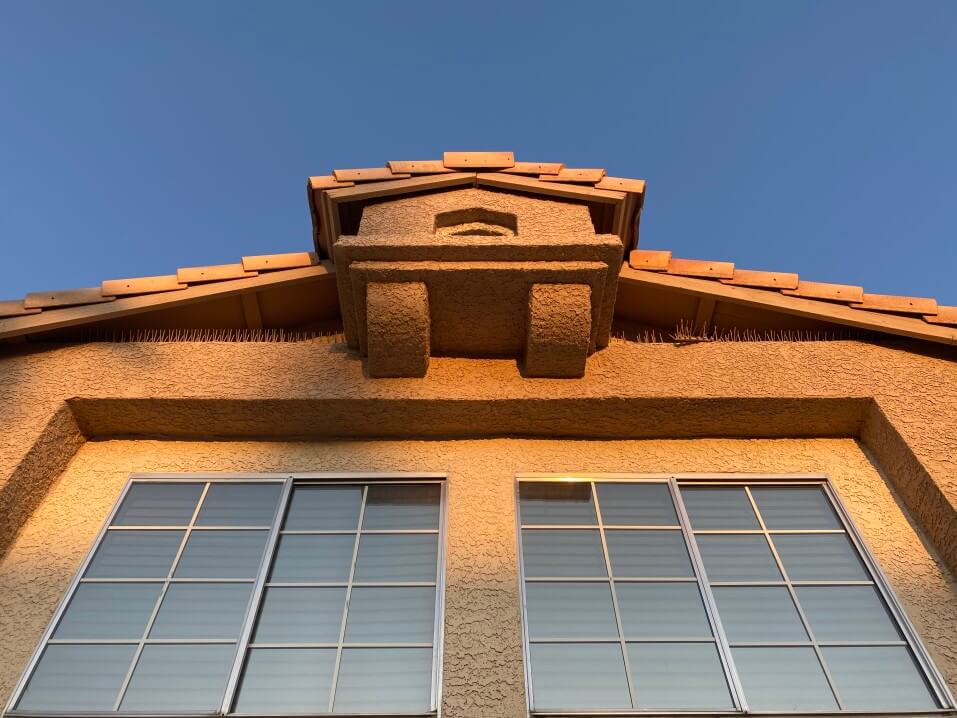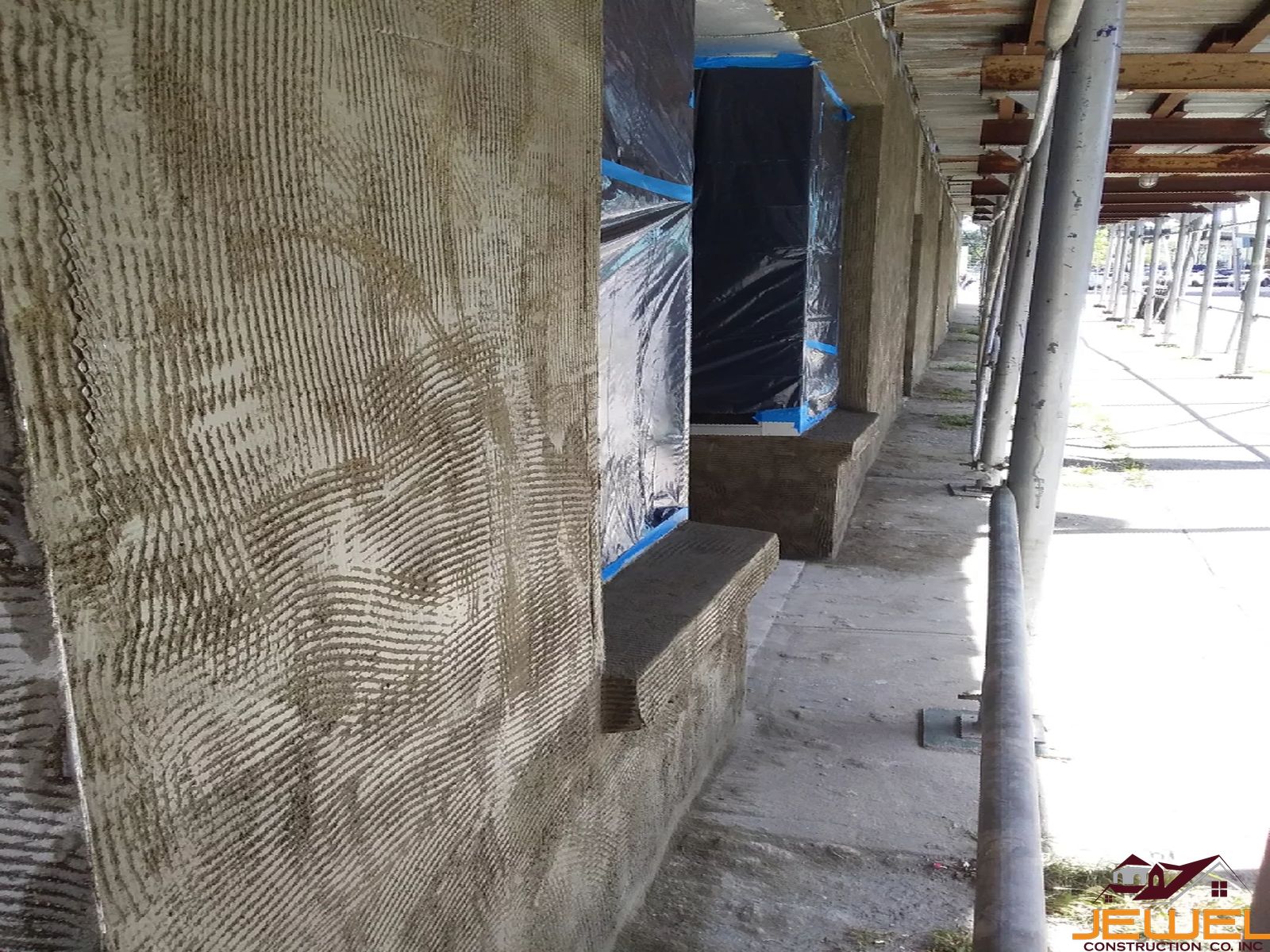Just How a Certified Stucco Contractor Can Improve Your Home's Visual Charm
Just How a Certified Stucco Contractor Can Improve Your Home's Visual Charm
Blog Article
A Comprehensive Overview to Stucco Repair Techniques
Stucco, a prominent choice for exterior finishes, can be subject to various types of damage that compromise both its aesthetic appeal and structural integrity. Understanding the subtleties of stucco fixing is important for property owners and specialists alike, especially in identifying the kind of damage and picking ideal repair service methods. This guide will certainly lay out typical pitfalls and critical actions to stay clear of, guaranteeing repair work are both effective and long-term. Yet, the intricacies of appearance matching and material option may question that merit more exploration.
Comprehending Stucco Damage
Determining stucco damages is crucial for preserving the honesty of a structure's exterior. Stucco, a popular option for its longevity and aesthetic appeal, can struggle with various types of damages because of ecological variables, poor installation, or age. Usual issues include cracks, water intrusion, and discoloration, each indicating underlying issues that need prompt attention.
Cracks in stucco can occur for several reasons, such as settling of the structure or thermal expansion and tightening. These fissures may seem minor initially but can result in significant water infiltration if left unaddressed. Water damage, often shown up as mold and mildew or rot, can endanger the architectural stability of walls and result in costly fixings.
Staining or staining on stucco surface areas can indicate moisture problems or the visibility of algae and mildew. Understanding the different types of stucco damages and their implications is crucial for residential property owners, making sure prompt repairs and maintaining the building's worth and safety and security.

Tools and Materials Needed
When starting a stucco repair project, having the right devices and materials available is important to guarantee an effective result. Key tools include a trowel, which is essential for smoothing and applying stucco; a hawk to hold the stucco while functioning; and a margin trowel for precision in tight areas. A mixing paddle affixed to a drill will aid attain a consistent stucco mix, while a sponge or brush is required for finishing touches and texture.
In terms of products, the key element is the stucco mix itself, offered in pre-mixed bags or as specific elements of concrete, lime, and sand. A color additive or distinctive finish might likewise be needed if the repair entails a certain color or texture. In addition, a bonding agent can enhance attachment between layers. Safety tools, including handwear covers, goggles, and a dirt mask, is essential to secure against unsafe dirt and debris. A decline towel or plastic bed linen will aid safeguard surrounding locations from spills or spots. Having these devices and materials prepared will enhance the repair work process and add to a professional-looking outcome.
Step-by-Step Repair Service Strategies
Efficiently fixing stucco calls for a systematic approach to ensure toughness and visual allure. Next, prepare the surface by getting rid of any kind of loosened or collapsing stucco making use of a carve or wire brush.
As soon as the location is prepped, tidy the surface area with water to get rid of dust and debris. For small cracks, load them with a top notch stucco patching substance utilizing a putty knife, ensuring to smooth it out for a seamless coating. For bigger holes, apply a bonding representative to the sides before making use of a stucco mix to fill the gap, layering it progressively.
After the fixing material has healed, make use of a trowel to match the structure of the surrounding stucco. Lastly, allow the fixed location to dry entirely prior to applying a layer of primer and paint, if wanted, to make sure uniformity. Complying with these steps will certainly lead to a durable and aesthetically attractive fixing that blends sympathetically with the original framework.
Typical Mistakes to Stay Clear Of

An additional usual challenge is making use of the incorrect mix proportions. Sticking to maker specs for blending stucco is crucial; inappropriate proportions can damage the last item. Furthermore, rushing the treating procedure can jeopardize the stability of the fixing. Permit enough time for every layer to treat before applying added layers.
Not matching the appearance and color of existing stucco is another oversight that can cause an undesirable repair service - next stucco contractor. It is very important to carry out extensive research on the initial texture, using similar strategies to accomplish a smooth finish
Lastly, overlooking climate problems during application can bring about poor end results. Prevent operating in severe temperature levels or throughout damp weather, which can adversely affect drying out and healing times. By avoiding these common blunders, you can make certain a much more effective and sturdy stucco repair work.
Maintenance Tips for Durability
 To ensure the long life of your stucco fixings, normal maintenance is necessary. Begin by checking the stucco surface at least two times a year for any indications of damages, such as splits or staining. Quickly attend to any kind of issues to stop further degeneration.
To ensure the long life of your stucco fixings, normal maintenance is necessary. Begin by checking the stucco surface at least two times a year for any indications of damages, such as splits or staining. Quickly attend to any kind of issues to stop further degeneration.In addition, keep sufficient drain around the structure to avoid dampness buildup, which can result in mold and mildew and architectural damages. Make certain downspouts and gutters are functioning correctly, guiding water far from the stucco surface.

Finally, consider using a protective sealant every click this link couple of years. This will boost the stucco's resistance to moisture and UV deterioration, further prolonging its lifespan.
Final Thought
In conclusion, effective stucco repair service techniques are vital for maintaining building honesty and looks. Recognizing damage, preparing surfaces, and making use of appropriate materials are essential action in the repair service procedure. Adherence to proper mixing ratios and structure matching makes certain successful results. Furthermore, normal maintenance, including assessments and cleansing, plays an essential role in prolonging the life expectancy of stucco. By implementing these techniques, property owners can alleviate pricey fixings and preserve the visual appeal of their frameworks.
Comprehending the nuances of stucco repair work is vital for house owners and service providers alike, especially in determining the type of damage and picking ideal repair service methods. Comprehending the numerous types of stucco damages and their effects is crucial for building proprietors, guaranteeing timely fixings and protecting the building's worth and security.When embarking on a stucco fixing task, having the right tools and products on hand is necessary to guarantee a successful end result. Secret tools consist of a trowel, which is crucial for smoothing and using stucco; a hawk to hold the stucco while working; and a margin trowel for accuracy in tight locations.To make sure the durability of your stucco fixings, normal upkeep is necessary.
Report this page